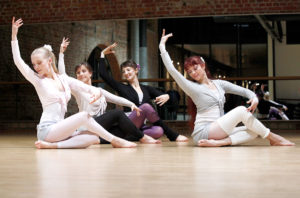What is Bollywood anyway? To get to the bottom of this question, we have put together some Bollywood information here.
The film came to India very early on, initially only as a visit. In 1896, a silent film by the Lumière brothers was shown for the first time in a hotel in Bombay. In 1913 Dhundiraj Govid Phalke made the first Indian feature film “Raja Harishchandra”. Even then, the content was Indian epics, which stayed that way for a long time. This creates its own film language and from it the Bollywood genre.
Bollywood - an Indian economic factor
 The name is derived from the actual location Bombay (today's Mumbai) and the great role model Hollywood. In the meantime, Indian film production has overtaken the American model. Between 900 and 1000 films are produced annually in India and are seen by 3.6 billion people worldwide. American productions reach a billion fewer people.
The name is derived from the actual location Bombay (today's Mumbai) and the great role model Hollywood. In the meantime, Indian film production has overtaken the American model. Between 900 and 1000 films are produced annually in India and are seen by 3.6 billion people worldwide. American productions reach a billion fewer people.
Typical for Bollywood films
An unmistakable indication of a Bollywood production are the strong emotionality of the representation and the inevitable happy ending or the tragic death of the actors. The successful producer Chopra sums it up: “In a three-hour film, the couple either have to die or get together. The audience should cry or laugh at the end. "
Gods in the movie
Like so much in India, Indian film is deeply rooted in Indian mythology and Indian dance history. The most common dance styles in film choreographies come from the Bharatnatyam, Kuchipudi, Kathakali or Kathak, which merge with the influences of Latin American dances, classical ballet, flamenco, musical dance and now hip-hop. The ideal landscape for myths is Kashmir as a combination of mountains and lake landscapes. It is currently impossible to shoot there, which is why the film teams like to move to the German or Swiss Alps. In the classic depictions of Krishna's love, the intimate relationship between the couple is illustrated by the ritual love game "leela". These playful variants replace realistic depictions of love. Couples used to not kiss in Bollywood films, but it has now become a trend. Bollywood has been becoming more and more modern in recent years.
New topics are discovered
In terms of content, the film industry has meanwhile broken away from pure portrayals of gods. The most important pioneer for this was probably the film "Kismet" from 1943. The heroine is the daughter of an impoverished theater owner who falls in love with a pickpocket. A strong motive of the stories arises here, which is decisive to this day - love with all its confusions. A few years later, in 1950, Meebob Khan directed the masterpiece “Mother India”, which was the first Indian film to receive an Oscar nomination. In this epic another motive of the Bollywood films crystallizes out - the love for home and the strength of the family. Over the decades, other topics came up: In the sixties it was about the unity of the country (the separation from Pakistan was complete). In the eighties there were many films in which the role of women changed. Instead of being exclusively wives and mothers, more and more professional and educated young women appeared on the screen. This was probably also due to the structural change in the audience, because Indian emigrants abroad were increasingly being opened up as audiences and wanted to find themselves in the films. This trend continued to grow and the stories “westernized”. A good example of this is Aditya Chopra's first film entitled “Dilwale Dulhana le Jayenge” (which, by the way, made superstar Sharukh Khan famous). Thus, the Bollywood films gained an increasingly important role as an element of identity for foreign Indians and the foreign markets became more and more interesting.
Bollywood is becoming international
In 2001 Bollywood caught up with the major non-Indian markets and pushed onto the international film market with the big-budget productions “Lagaan” and “Ashoka” (the latter premiered abroad for the first time). The success confirmed the investment, with the historical films the distribution channels were opened. In the meantime there are even considerations to limit the dance numbers and shorten the films for the international market. Now the superstars and big films are no longer unknown in Germany either. There has been a real trend around Bollywood - it is not for nothing that the TV station “Zee one” was established in Germany.















